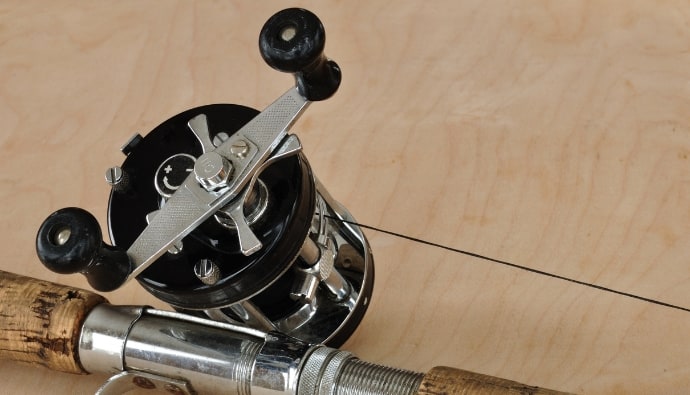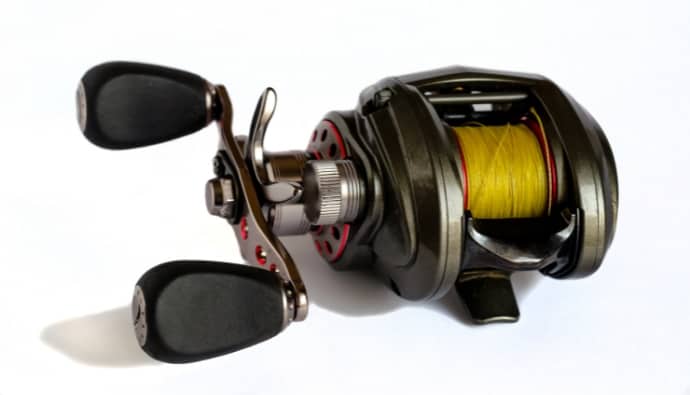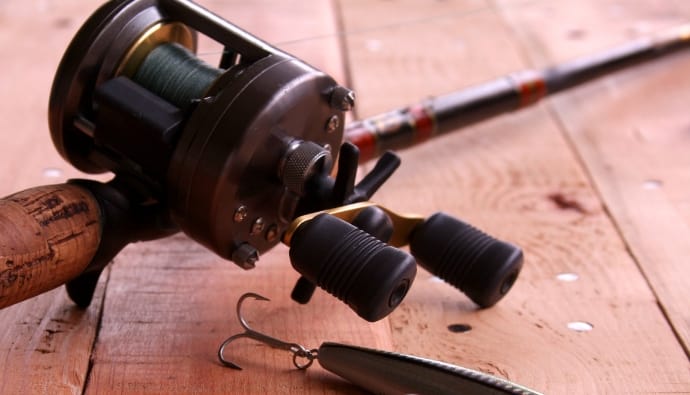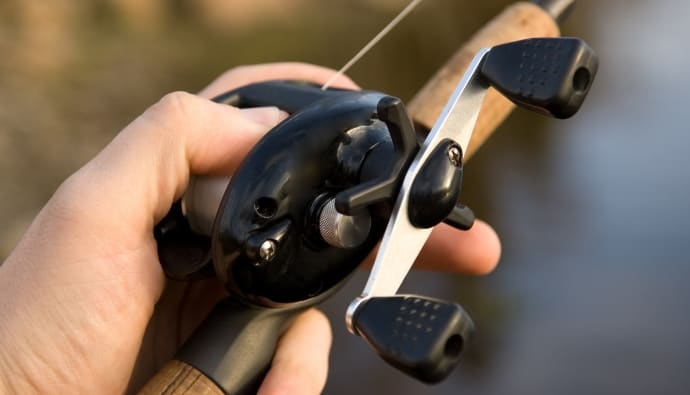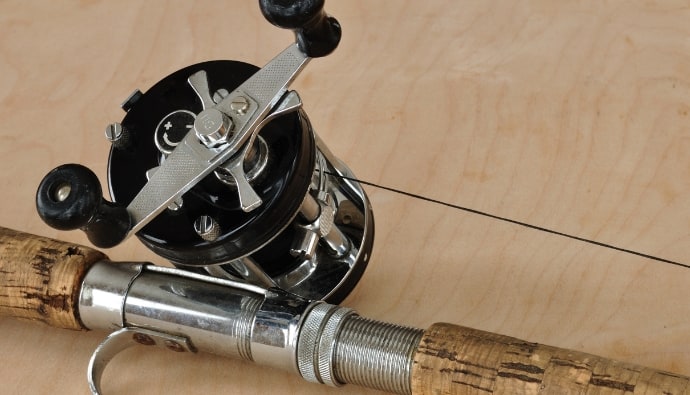You need a soft cloth, soapy water, grease, oil, lubricants, and paper towels to clean your spinning reel. You can use three cleaning methods; a simple hose down, an external and internal deep clean, which involves removing moving parts, or a comprehensive external clean using products.
Cleaning and maintaining your spinning reel increases its working life and ensures that the gear functions properly for years. Failure to perform regular maintenance could lead to a malfunction and accumulation of salt, blood, dirt, and body oils.
This guide will examine the different ways to clean a spinning reel to ensure optimal performance.
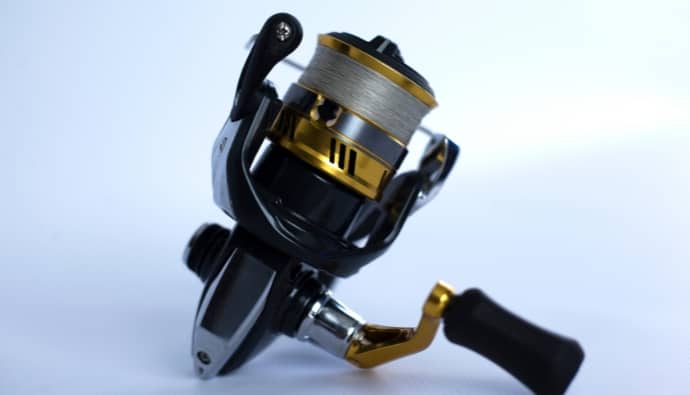
What Are the Basic Reel Maintenance Tips?
If you are fishing in freshwater, you should perform basic maintenance on your reel at least once a week. For saltwater fishing, you should schedule the maintenance after every second fishing expedition.
As you become more seasoned, it becomes easier to clean your fishing reel. Here are some basic tips for spinning reel maintenance.
Clean the Exterior with a Spray Bottle
If the spinning reel gets exposed to salty water or dirt, you can clean the exterior parts by spraying with a mist of water and wiping with a soft cloth.
Avoid spraying a strong jet because it can spread salt and dirt to the interior parts of your reel.
Respool the Spinning Reel
You should re-spool your reel about once a month. This varies depending on how often you go fishing and the type of line you use.
Tighten the Screws
A loose screw on your spinning reel can cause major problems as you fish. Ensure that all the screws are tight, especially on the handle, for a better fishing experience.
Loosen the Drag
After each fishing trip, you need to take the pressure off the drag washers. This prevents the drag mechanism from becoming too tight, which can be frustrating during fishing. It also increases the longevity of your spinning reels.
Keep the Reel Away from Sunlight
Once you come back from your fishing trip, wrap your reel in a cloth and store it in a room or area protected from sunlight.
Avoid Taking Apart Your Entire Reel
It’s not always a good idea to take apart your spinning reel entirely because it can be challenging to put it back together, especially if it’s your first time.
During cleaning, there are parts that you can easily remove and take back, such as the handle and bail arm. However, if you need to separate the parts, ensure that you have the schematics to arrange them back in order.
How to Clean a Spinning Reel
Now that you know the basic spinning reel maintenance methods, how can you clean this fishing gear properly? Here, we’ll look at the different techniques and a step-by-step guide to getting started.
But first, what products do you need to clean your fishing reels? You’ll require the following:
- Oil, grease, or lubricant
- Soft cloth
- Soapy water
- Paper towel
- Small screwdriver
- Soft toothbrush
Let’s get to the cleaning methods.
The Basic WashDown
Cleaning fishing reels should be a regular activity. The basic washdown should be done after every fishing trip, whether you were in freshwater or salty water. In addition, it’s an absolute must if you are a saltwater angler.
Salty water will lead to corrosion even if you have the most expensive spinning reel with high-quality alloys and treatments. It slowly degrades your favorite spin reel when you don’t reduce the salt accumulation.
To clean the reel, remove it from the rod and hose it down the reel seat. Ensure that the drag is tight to avoid getting water to the drag washers.
Shake off the excess water and allow the spin reel to dry before storing it.
The External Clean
While the basic wash removes the dirt on your reel, you need a comprehensive external clean to remove any leftover dirt and sand. Here are the steps to follow.
- Follow the steps for the basic washdown.
- Remove the spool and drag knob, if necessary, from the fishing line.
- Use a cloth to remove any dirt, debris, or sand at the top and inside of the spool, as well as the drag washers.
- Pour a few drops of oil at the bottom of the spool shaft and turn the handle to distribute the oil.
- Remove the handle to clean sand and dirt, and add some oil to keep the handle lubricated.
- Remove the bail arm and examine the bail roller for any damage or dirt.
- Clean the roller and reassemble the reel.
A Full Deep Clean
If you are mechanically skilled, you can carry out a deep cleaning which involves removing all parts, cleaning, assembling, and greasing. However, taking apart your entire reel is unnecessary if you are a beginner. The comprehensive external cleaning can help you maintain the reel and keep it functional for years.
After cleaning and reassembly, ensure that you check parts subject to normal wear and tear, such as the plastic drag knob, for stress cracks.
How to Clean Your Spinning Reel After Saltwater Use?
Spinning reels are affected by corrosion when used in salty water. Although reels have sealing technology to protect gears and bearings from corrosive salt water, sand and salt can build up if you don’t clean them regularly.
To keep your reels clean, ensure that you rinse them off as soon as you return from your fishing trip.
Which Oils Can You Use on Spinning Reels?
Anglers need to be careful with their fishing equipment. For this reason, it’s important to only use oils specifically meant to lubricate reels.
Avoid any oils not meant for this purpose, such as machine oil, olive oil, and vegetable oil. For instance, machine oil will slow down your whole reel because it’s viscous.
You need an oil that will provide a light coating on your gear. The ideal oil is thin and light with low viscosity; your reel moves without hiccups.
How Often Should You Oil the Spinning Reels?
If you frequently fish, ensure that you oil the reels after each second or third fishing trip. However, if your fishing trips are scattered, you can oil them once every month.
Keep in mind that you should oil your reels before your fishing trip if you have not used the reel for several months.
Conclusion
Taking care of your reels should be a priority for every angler. To maintain your spinning reels, you must have the proper oil to lubricate the reel shaft, ball bearings, handle, and gears.
You should also use Clenzoil to wipe the reel exterior, which adds a protective coating to the surface. If you maintain the reels properly, you can use them for decades without problems.



 Facebook
Facebook YouTube
YouTube